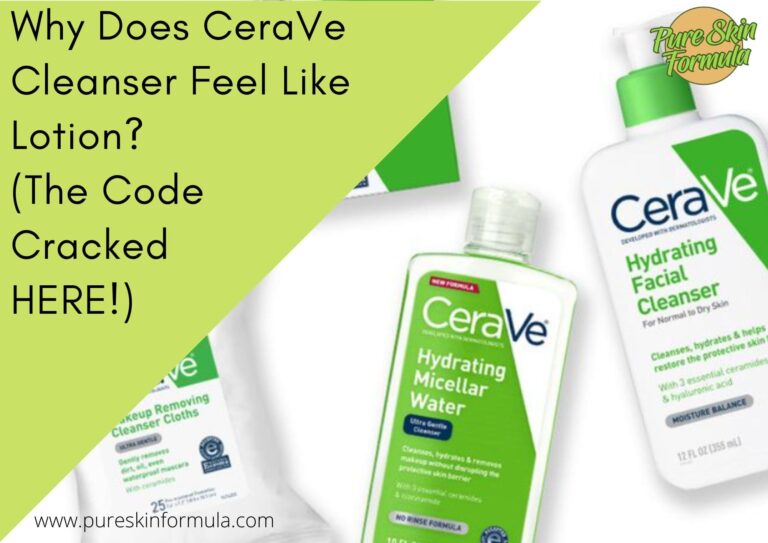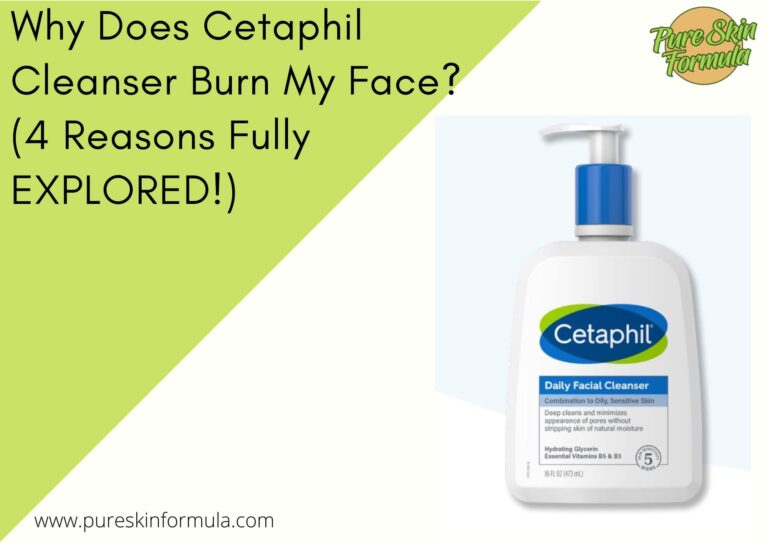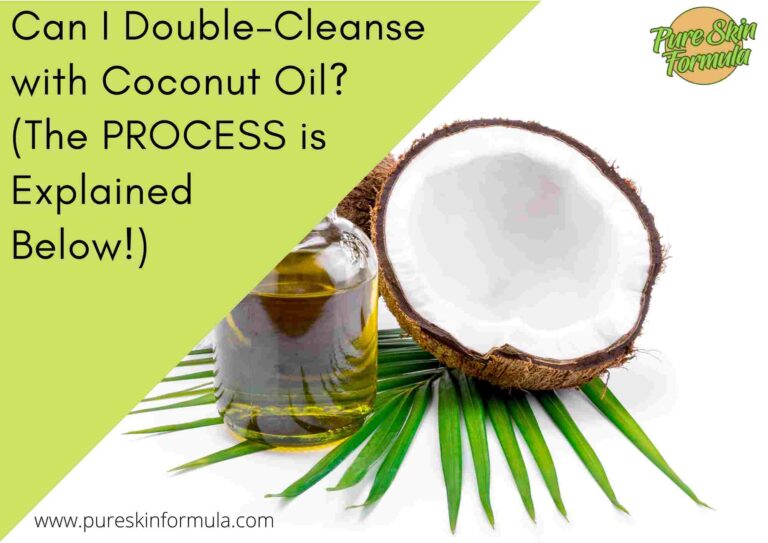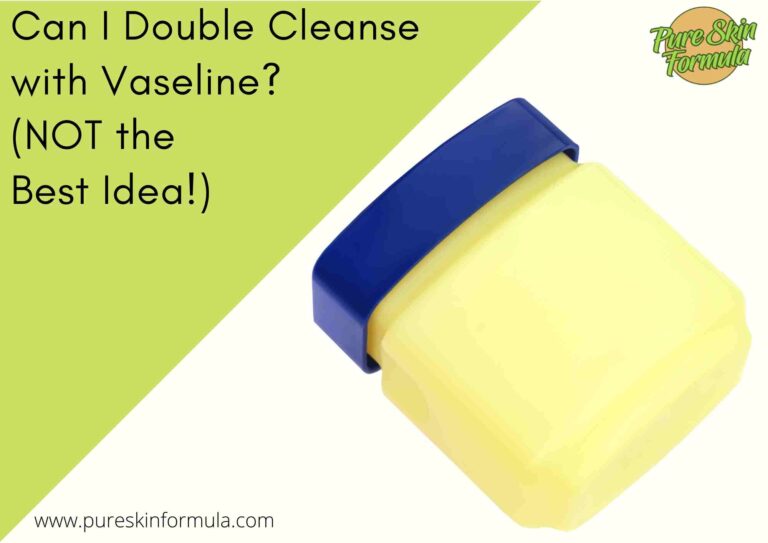We will kick things off by explaining what double cleansing is all about. If you’re unfamiliar with it, double cleansing is a skincare routine that originally gained popularity in South Korea and Japan and has since made waves worldwide.
It’s a two-step process aimed at thoroughly cleansing your skin. First up is an oil-based cleanser, which removes makeup and sebum. Next, you follow up with a water-based cleanser that gives you a deeper clean, getting rid of any residual impurities.
A question arises – can a single cleanser truly unlock the coveted benefits of the famed double cleanse? Join me as I demystify the art of double cleansing with an in-depth look at formulations, expert opinions, and practical tips. Your skincare adventure begins here, where clarity meets complexion!
Can I double-cleanse with the same cleanser?
Technically, double cleansing involves using two types of cleansers—one to remove makeup and impurities and another for a deeper cleanse. Using the same cleanser twice may not provide the intended benefits of double cleansing.
However, it might be possible if the cleanser is formulated to remove makeup and impurities without over-drying the skin. It’s crucial to consider the cleanser’s ingredients and your skin type. Experiment cautiously and observe how your skin responds to determine if a single cleanser suffices for a thorough double cleanse.
Let’s explore this topic further.
One or two is better?
This approach isn’t just for removing dirt and makeup; it’s also about preparing your skin to absorb the rest of your skincare products better. Think of double cleansing as paving the way for toners, serums, and moisturizers to work their magic more effectively.

One key aspect of double cleansing is that the two types of cleansers play a specific role in the cleansing ballet. The oil-based cleanser is the prima ballerina for removing oily substances and waterproof makeup, while the water-based cleanser ensures that water-soluble debris is washed away.
But do you need two different formulas, or can you do it with one hero cleanser to take on both roles?
That will lead us to our next section, where we talk about flipping the script. Can you double-cleanse with the same cleanser? It sounds like a simple way to streamline your routine, but don’t rush to conclusions just yet.
We’ll investigate whether this approach holds up against the traditional method so you can make an informed decision for your skin.
Can I use the same cleanser twice?
After grasping the essentials of double cleansing, you’re probably curious about bending the rules. You might ask, ‘Can I streamline the process using the same cleanser twice?’
The whole point of double cleansing is to tackle different types of impurities. First, an oil-based cleanser is meant to dissolve makeup, sunscreen, and sebum. Then, a water-based cleanser will sweep away sweat, dirt, and remaining debris.
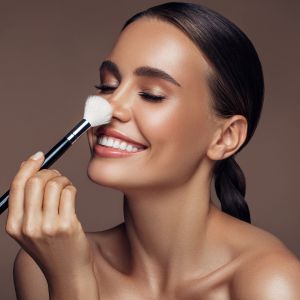
But if you’re after an approach that’s as minimalist as your skincare shelf, you might wonder if doubling up on one product could do the trick. While that might sound convenient, it’s crucial to consider whether your cleanser adequately addresses oil and water-soluble impurities.
Here’s the deal: using the same cleanser might work for some, particularly if you have certain skin types or don’t wear heavy makeup. However, it’s not a one-size-fits-all answer. The effectiveness highly depends on the type of cleanser and what you’re trying to clean off your skin.
If your cleanser is formulated to transform from oil-like to water-like properties—or if it’s particularly adept at removing a wide range of impurities—then the same-cleanser method could be somewhat effective. But don’t count on it to provide the comprehensive cleaning of a two-product routine.
I want you to understand the nuances before making a switch. Let’s face reality: a cleanser meant to do it all might compromise on the thoroughness you’d get from two specialized products. This is something to weigh in when considering if this method aligns with your skin’s needs.
Pros and cons of single-cleanser double-cleansing
So now, you know that while it’s not the norm, double cleansing with the same cleanser isn’t off-limits. But weighing the advantages and downsides before you decide to streamline your skincare routine is crucial. Let’s examine what’s at stake.
First up, the advantages. Using one cleanser twice can save you both time and money. If you’re constantly on the go or keeping an eye on your budget, simplifying your routine makes sense. Plus, if you’ve already found a cleanser that loves your skin, why not stick with it? Particularly sensitive skin may thank you for avoiding introducing new products.
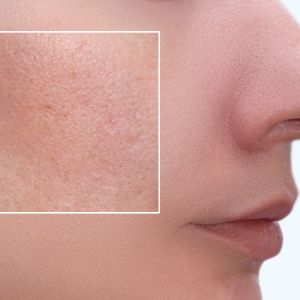
On the flip side, simplifying down to one cleanser could mean you’re missing out on some benefits. Traditional double cleansing capitalizes on the unique strengths of two distinct formulas. Using the same product for both steps might not give you that comprehensive clean.
Particularly for those wearing heavy makeup or sunscreen, a single-cleanser method may leave residuals that could lead to blocked pores or breakouts. And what about those living in high-pollution areas or with oilier skin types? They’re going to find that specialized cleansers in a two-step approach could provide a more thorough detox.
However, I’m not here to just present the challenges. A single-cleanser routine can work well for many, especially those with less exposure to heavy pollutants and lighter skincare needs. Opt for a formula with a balanced pH without harsh surfactants that strip the skin.
Choose something that resonates with you for your skin’s needs and lifestyle. You can always adjust your approach down the road. If your skin requires a more intensive cleanse, adding a second, distinct cleanser into the mix for occasional use might be the game-changer you’re looking for.
Best practices for double cleansing your skin
Now, if you’re committed to trying double cleansing or want to refine your technique, starting with the right products is essential. Choose something that resonates with you.
For example, you’ll want to avoid cleansers with harsh surfactants if you have dry or sensitive skin. Conversely, oily skin types might benefit from cleansers containing salicylic acid or other oil-dissolving ingredients.
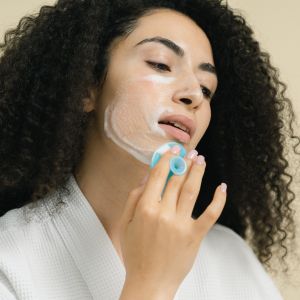
A step-by-step guide is your best friend here. Begin by applying the first round of cleanser to dry skin, gently massaging to break down makeup and surface oil. Rinse off, and then apply the second round of cleanser to damp skin.
This is where you can be thorough with your technique, ensuring you wash away any remaining impurities.
Don’t worry too much about perfection on your first attempt. You can always adjust your approach down the road. Your skin’s needs may change with the seasons, diet, or age. It makes sense to reassess the products and methods you use occasionally.
Above all, integrating double cleansing into your skincare routine should be about enhancing your skin’s health, not following a fad. A lot is happening quickly in the skincare world, and it’s easy to get caught up in the latest trends.
That’s the strategy I like to leverage: staying informed and listening closely to what my skin tells me.
Your first attempt doesn’t need to be your last. Be open to experimenting with different cleansers and techniques until you find what works best.
Conclusion
The decision to double cleanse with the same cleanser hinges on various factors. While traditional double cleansing involves two different formulations, adapting the routine with a versatile cleanser can be feasible for some.
Consider your skin type, the cleanser’s formulation, and any additional skincare needs. Experts recommend a personalized approach, emphasizing consistency and adaptation. Remember, achieving a clean canvas for your skincare products is key.
Experiment wisely, monitor your skin’s response, and embrace a skincare routine that caters to your unique needs for a radiant, healthy complexion.
Thank you for reading!
Valeria




